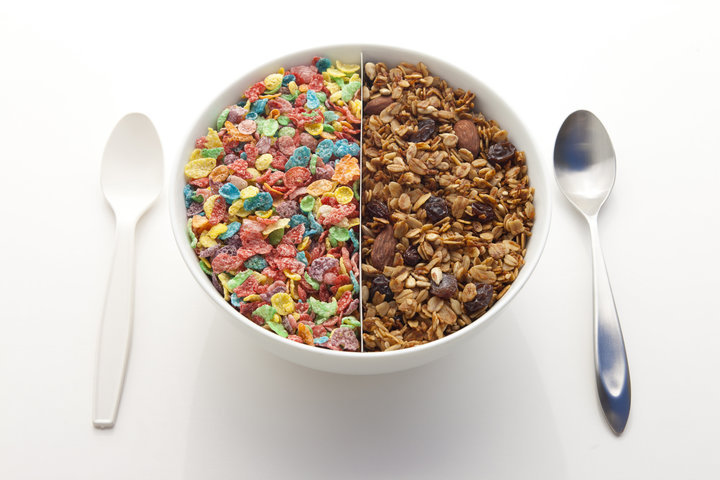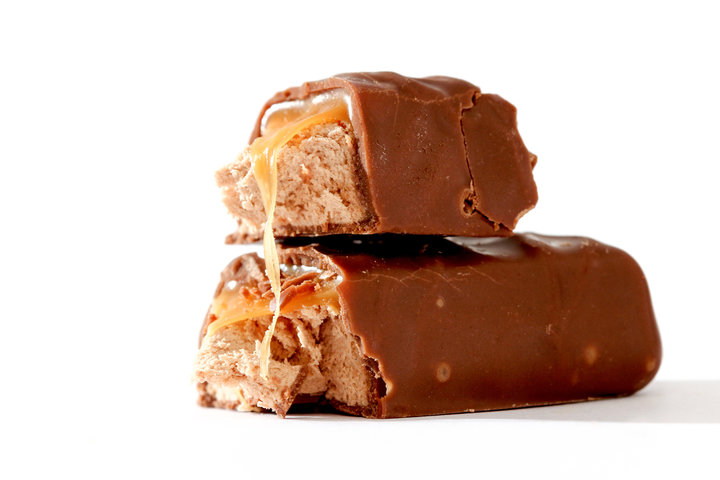The Healthiest Salad Dressings, Ranked By Nutritionists

Read original story on HuffPost Food & Drink
Salads can be a great source of healthy fats, fiber, protein and other nutrients, but things can quickly go downhill with additions like fried foods ― croutons and bacon, we’re looking at you ― and the all-important dressing. While drenching your kale salad with ranch might make it more delicious, you’re simultaneously dialing down its health benefits.
Store-bought dressings are often high in saturated fat, sodium, added sugar and calories, in addition to artificial colors, flavors and preservatives. And it all adds up ― while a typical serving size is 2 tablespoons, it’s not uncommon for people to use more.
“Getting familiar with serving sizes and having measuring spoons and cups at home is a good way to practice so that eventually you can eyeball correct portions in order to keep them in check,” Rebecca Ditkoff, a registered dietitian and founder of Nutrition by RD, told HuffPost.
We chatted with three nutritionists to gain some insight into what makes a salad dressing healthy or unhealthy, and asked them to rank some of the nation’s most popular varieties.
The healthiest salad dressings are the simplest ones
“The best salad dressings are typically very simple with few ingredients,” Pegah Jalali, a registered dietitian at Middleberg Nutrition, told HuffPost. “You always want to focus on the first few ingredients [and] avoid a salad dressing with ingredients that you cannot recognize like phosphoric acid, calcium disodium EDTA and artificial flavors.”
Jalali lists vinegars, oils and spices found in a typical home kitchen as solid core ingredients. Her store-bought salad dressing of choice is Primal Kitchen’s green goddess dressing. “It’s made with minimal ingredients and uses health-supportive ingredients including avocado oil, [plus] it has no added sugars and is delicious,” Jalali said.
Making your own dressing allows you to control fat, sugar and sodium content
Ditkoff’s favorite salad dressing is a balsamic-Dijon dressing that she makes at home in minutes using just a handful of ingredients: 1/2 cup extra virgin olive oil, 1/2 cup balsamic vinegar and 1 teaspoon Dijon mustard, plus salt and pepper to taste. “Not only is it easy to control the quality of ingredients and EVOO used, but it is also so much cheaper to make your own dressing,” Ditkoff said.
As a store-bought alternative, she recommends Stonewall Kitchen’s olive oil and balsamic dressing. “It only contains four ingredients (olive oil, balsamic vinegar, spices and garlic) and it tastes great on almost any kind of salad or as a marinade for chicken,” she said.
Note the serving size, sodium content, saturated fat and added sugars
“Most Americans consume more than 3,400 milligrams of sodium when the recommendation by the Dietary Guidelines for Americans is consuming less than 2,300 milligrams of sodium,” said Jonathan Valdez, owner of Genki Nutritionand spokesperson for New York State Academy of Nutrition and Dietetics. He added that according to the American Heart Association, saturated fat should be no more than 5 to 6 percent of your total caloric intake. For a 2,000-calorie diet, this equals 120 calories or 13 grams of saturated fat.
Valdez likes miso or miso-ginger dressing. “Miso is a good source of B vitamins, folic acid, and vitamin K and E,” he said. “Because of its fermented makeup, it also has positive benefits for the gut, which more research is suggesting could assist with managing inflammation and overall wellness.”
The ranking
Below is a compiled ranking based on the input provided by these nutritionists. Specific brands were chosen for the purpose of comparison.
Ditkoff pointed out that what’s “healthier” can vary depending on each individual’s nutritional needs and past medical history. “For example, a person with diabetes would want to watch out for added sugars, whereas someone with hypertension would want to keep an eye on the sodium per serving,” Ditkoff said.
Extra virgin olive oil (California Olive Ranch extra virgin olive oil)
Blue cheese (Bolthouse Farms chunky blue cheese)
Balsamic vinaigrette (Newman’s Own balsamic vinaigrette)
Italian (Wish-Bone house Italian)
Thousand Island (Kraft Thousand Island)
Honey Dijon (Ken’s Dijon honey mustard)
French (Brianna’s Zesty French dressing)
Ranch (Hidden Valley ranch)
The pantry staple extra virgin olive oil was the top choice for Ditkoff and Jalali. “The rest [of the dressings] are really similar as they are all made using poor quality oils and contain too much sodium and many other ingredients that are unnecessary,” Jalali said. While EVOO has the highest amount of calories (240 calories in a 2 tablespoon serving), its health benefits and clean ingredient list make it a winner.
Blue cheese and balsamic vinaigrette trail just behind EVOO. With the addition of yogurt, the Bolthouse blue cheese dressing was the lowest in calories and fat content (35 calories and 2.5 grams of fat), and Ken’s balsamic vinaigrette ranked high thanks to its recognizable ingredients list and relatively low calorie count (90 calories).
Ranch and French dressing were ranked the unhealthiest options of the bunch because of their high sodium (260 milligrams and 240 milligrams, respectively) and fat content (14 grams in ranch including 2.5 grams saturated fat, and 15 grams in French with 1 gram saturated fat).
For the ranch lovers out there, don’t despair. Valdez said that the ranking “shouldn’t deter you from eating vegetables with dressing, especially if it will help you meet the USDA’s recommendation of 5-9 servings of fruits and vegetables.” To help minimize the amount of dressing you consume, he suggested eating your salad with dressing on the side and dipping each bite.





